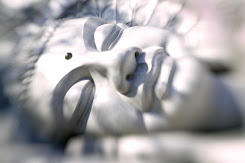If Pramana, Viparyaya, Vikalpa, Nidra and Smriti may be called the painless functions of the Antahkarana, which are studied in general psychology, the other functions, viz. Avidya, Asmita, Raga, Dvesha and Abhinivesa may be regarded as the painful ones, because it is these that cause the unhappiness of all beings, and these form the contents of abnormal psychology. The painful functions create pain not only to oneself but to others as well, because we have a tendency to transfer our pain to others. A personal affair becomes a social problem and the personal ego becomes a social assertiveness. One’s likes and dislikes may seriously affect others in society. The Yoga psychology takes this fact into consideration. Hence, before contemplating any method to frees the mind from its painful functions, it has first to be weaned from society and brought back home from its meanderings
The painful functions create pain not only to oneself but to others as well, because we have a tendency to transfer our pain to others. A personal affair becomes a social problem and the personal ego becomes a social assertiveness. One’s likes and dislikes may seriously affect others in society. The Yoga psychology takes this fact into consideration. Hence, before contemplating any method to frees the mind from its painful functions, it has first to be weaned from society and brought back home from its meanderings
The Divine Life Society, Sivananda Ashram, India
outside. Like a thief who is first arrested and then suitably dealt with, the mind has to be made to turn away from the tangle of the external world, and then analyzed thoroughly. Social suffering is the impact of these psychological complexities mutually set up by the different individuals through various kinds of interaction.
Social tension is the collision produced by individualistic psychological entanglements. This is the reason for everyone’s unhappiness in the world. No one is prepared to sacrifice one’s ego, but everyone demands the sacrifice of the egos of others. Yoga has a recipe for this malady of man in general, for this internal illness of humanity. It asks us to bring the mind back to its source of activity, and if all persons are to do this, it would serve as a remedy for social illness, also. Thus, though Yoga is primarily concerned with the individual, it offers a solution for all social tensions and questions.
Yoga alone can bring peace to the world, for it dives into the depths of man. Yoga is, therefore, a means not only to personal salvation but also to social solidarity. The mind is to be brought to its source. Unfortunately, we cannot know where the mind is unless it starts working, like the thief whose presence is known from his activities. The outer problems are manifestations of the inner fivefold complexity. Ignorance is the first cause. But it is a negative cause when one is merely ignorant or stupid. Man does not stop with this acceptance.
He wants to demonstrate his ignorance, and here is the root of all trouble. Affirmation of egoism is the first demonstration. When one wants others to yield to the demands of one’s ego which goes counter to the egos of others, there is clash of personalities and interests, and this circumstance breeds unhappiness in family, in society, and in the world. Yoga makes an analysis of this situation. Avidya affirming itself as Ahamkara and clashing with others produces the context of Himsa or injury. As Himsa is an evil which begets social grief of different types, Ahimsa or non-injury is a virtue. Ahimsa is akin to the Christian ethics which teaches us to ‘resist not evil.’ If even a single ego would withdraw itself, the friction in society would be less in intensity to that extent.
Himsa is born of Asmita, Raga and Dvesha, and hence Ahimsa is a moral canon. Ahimsa, or the practice of non-violence, is not merely a rule of action but also of thought and feeling. One should not even think harm of any kind. To contemplate evil is as bad as committing it in action. Contemplation is not only a preparation for activity but is the seed of the latter. ‘May there be friendliness instead of enmity, love instead of hate,’ is the motto of Yoga. By love we attract things and by hatred we repel them. Love attracts love, and hatred attracts hatred.
vision, love without attachment (Raga) or hatred (Dvesha). Ahimsa has always been regarded as the king of virtues and every other canon of morality is judged with reference to this supreme norm of character and conduct. The ego tries to work out its likes and dislikes by various methods, one of them being the uttering of falsehood in order to escape opposition from others.
The insinuating of falsehood in society is regarded as a vice. Satya or truthfulness is another virtue. Truthfulness mitigates egoism to some extent. Dishonesty is an affirmation of the ego to succeed in its ways in the world for its own good, though it may mean another’s harm. Truthfulness is correspondence to fact. Yoga stresses the importance of the practice of truth in human life. There are dilemmas in which we are placed when we find ourselves often in a difficult situation. Sometimes truthfulness may appear to lead one to trouble and one might be tempted to utter falsehood.
From The Yoga System
Scriptures give many answers to our questions on the issue. Truth that harms is considered equal to untruth. We have to see the consequence of our conduct and behaviour before we can decide whether it is virtuous or not. But, then, are we to utter untruth? A most outstanding instance on the point is narrated in the Mahabharata.
THE MORAL RESTRAINTS - Part 1
Posted by Amrit Sen at 4:37 AM




0 comments:
Post a Comment